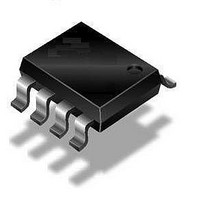QT115A-ISG Atmel, QT115A-ISG Datasheet - Page 7

QT115A-ISG
Manufacturer Part Number
QT115A-ISG
Description
IC TOUCH SENSOR PROX 8SOIC
Manufacturer
Atmel
Datasheet
1.AT42QT1040-MMH.pdf
(72 pages)
Specifications of QT115A-ISG
Input Type
*
Output Type
*
Interface
*
Current - Supply
*
Mounting Type
Surface Mount
Operating Supply Voltage
3 V to 5 V
Maximum Operating Temperature
+ 85 C
Mounting Style
SMD/SMT
Package / Case
SO-8
Minimum Operating Temperature
- 40 C
Lead Free Status / RoHS Status
Lead free / RoHS Compliant
Package / Case
-
Lead Free Status / Rohs Status
Details
1.1
1.2
Touch Sensors Design Guide
Introduction
Self-capacitance and Mutual-capacitance Type Sensors
The process for designing products that use touch controls is a complex process with many decisions to
be made, such as what materials will be used in their construction and how the mechanical and electrical
requirements will be met. Key to this process is the design of the actual sensors (specifically keys,
sliders, wheels and touchscreens) that form the interface with the user.
Sensor design is often considered a “black art”; the distributed nature of the electric fields between the
sensor and its electrical environment can make simple “lumped element” approximations of sensor
behavior misleading at best. Nevertheless, by following a few essential rules, it is possible to produce a
resilient design that ensures that the sensors will operate in a reliable and consistent manner.
This design guide describes the rules that can be used to create sensor patterns on PCBs or other
conductive material, such as Indium Tin Oxide (ITO). There are, of course, many possible configurations
for such sensors, and this guide cannot be exhaustive; however, it will aid in the initial selection and
construction of sensors for touch-enabled products, and should provide an excellent starting point.
You should also refer to QTAN0032, Designing Products with Atmel Capacitive Touchscreen ICs for an
overview on designing capacitive touchscreens.
Atmel
capacitive measurement styles:
Background information on Atmel’s capacitive sensing methods can be found at www.atmel.com.
1. Direct contact with the sensor carries an elevated risk of ESD damage for the control chip.
Self-capacitance type sensors
A self-capacitance type sensor has only one direct connection to the sensor controller. These sensors
tend to emit electric fields in all directions, and as such are quite non-directional. They can work with
and without an overlying panel, although a panel is always recommended for electrostatic discharge
(ESD) reasons
sensor controllers.
Mutual-capacitance type sensors
A mutual-capacitance type sensor has two connections to two parts of the sensor: an X (transmit)
electrode, and a Y (receive) electrode. The mutual capacitance from X to Y is measured by the sensor
controller. Because of the close-coupled nature of the fields with this type of sensor, it is only suitable
for use when bonded to an overlying panel so that no significant air gaps or bubbles are present; the
overlying panel forms an essential conduit for the field from X to Y. This type of sensor is suitable for
for implementating sensors for use with QMatrix
®
touch controllers allow for two families of sensors, each using one of two charge-transfer
(1)
. This type of sensor is suitable for implementating sensors for use with QTouch
Introduction To Sensor Design
™
sensor
controllers.
Section 1
10620D–AT42–04/09
™
1-1












